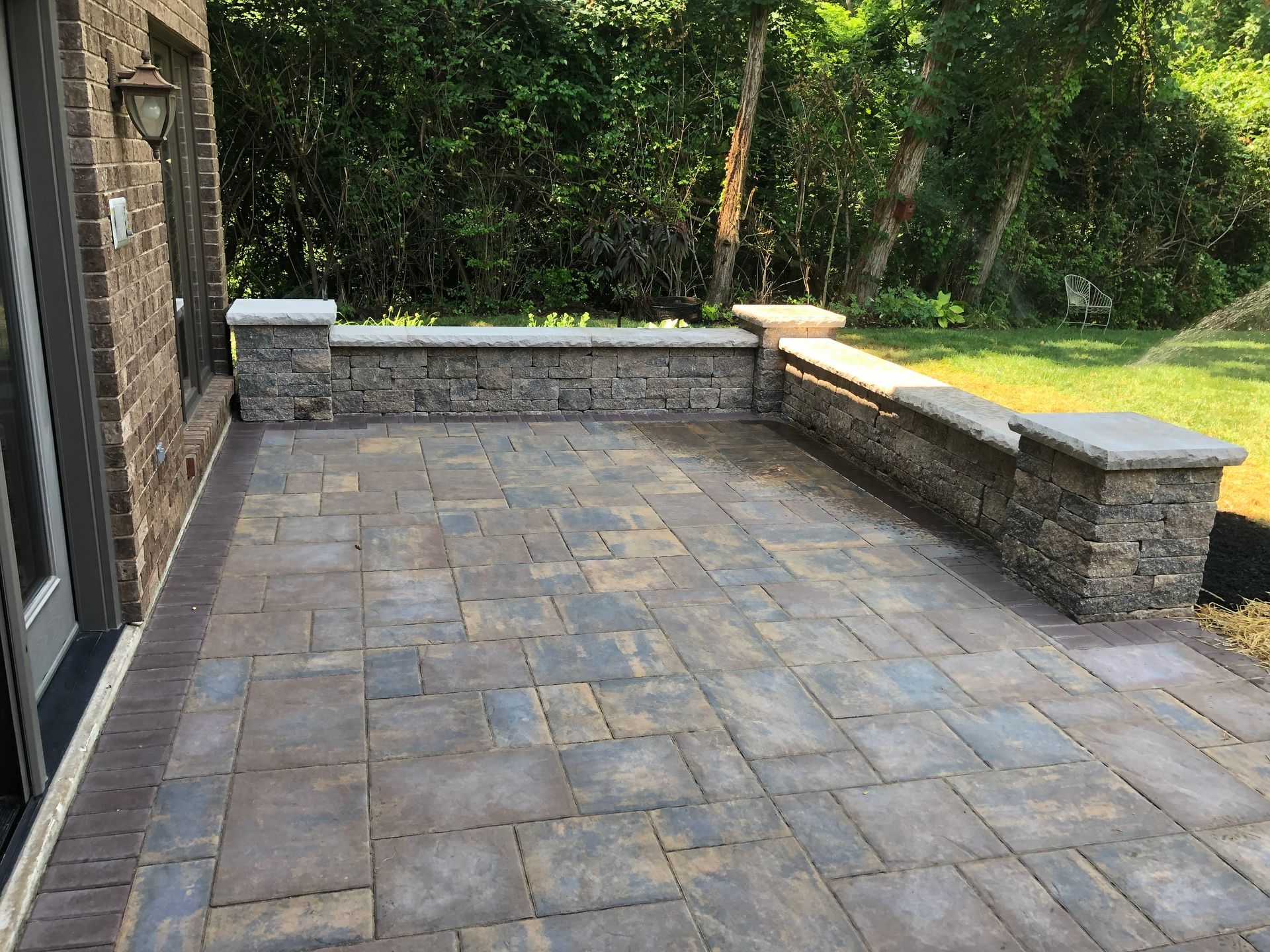Blending Softscape and Hardscape: Creating a Balanced Outdoor Oasis
Adam Lawson • May 6, 2025
Transforming your outdoor space into a harmonious retreat requires a thoughtful blend of softscape (plants, soil, and organic elements) and hardscape (pavers, stone, and structural features). By pairing pavers with plants, lighting, and water features, you can create a balanced, inviting oasis that’s both functional and beautiful. Here are practical tips to achieve this seamless integration.
Pairing Pavers with Plants
Pavers provide structure and durability, while plants add life and softness. To strike a balance:
- Choose Complementary Textures:
Pair smooth pavers, like polished concrete, with lush greenery such as ferns or hostas to create contrast. For rustic stone pavers, opt for hardy plants like lavender or ornamental grasses that enhance the natural vibe.
- Incorporate Planting Pockets: Leave gaps between pavers to plant ground covers like creeping thyme or moss. These soften hard edges and create a living pathway. For larger spaces, integrate raised garden beds edged with pavers to define planting areas.
- Vary Heights and Layers:
Use pavers to create multi-level terraces, then plant low shrubs, mid-height perennials, and tall trees to add depth. For example, a flagstone patio surrounded by boxwoods and flowering hydrangeas feels cohesive yet dynamic.
Pro Tip:
Match paver colors to plant hues—gray pavers with silver-leaved plants like lamb’s ear, or terracotta pavers with warm-toned roses—for a unified look.
Integrating Lighting for Ambiance and Function
Lighting enhances both the beauty and usability of your outdoor space, highlighting the interplay between hardscape and softscape.
- Highlight Key Features: Use uplights to showcase trees or shrubs, casting dramatic shadows against paver walls or patios. Low-voltage path lights embedded in paver walkways guide footsteps while illuminating nearby plants.
- Soften with Subtle Glows:
String lights or lanterns hung over a paver courtyard create a cozy atmosphere, complementing surrounding greenery. Solar-powered stake lights tucked into flower beds blend seamlessly with softscape elements.
- Balance Warm and Cool Tones:
Warm lighting (2700K) pairs well with earthy pavers like brick, while cooler lighting (4000K) suits modern concrete or slate. Ensure lighting accents plants without overpowering their natural colors.
Pro Tip:
Install dimmable LED lights to adjust ambiance for different occasions, from vibrant gatherings to tranquil evenings.
Adding Water Features for Serenity
Water features bring movement and sound, bridging the static nature of hardscape with the organic flow of softscape.
- Incorporate Focal Points:
A stone fountain set on a paver platform, surrounded by water-loving plants like irises or rushes, creates a stunning centerpiece. The hardscape anchors the feature, while plants soften its edges.
- Blend with Natural Elements:
A small pond edged with irregular stone pavers and native aquatic plants feels like a natural extension of the landscape. Add floating lilies or marginal plants to enhance the organic aesthetic.
- Use Reflective Surfaces:
Position water features near smooth pavers to reflect light and surrounding greenery, amplifying the sense of space. A sleek reflecting pool bordered by minimalist pavers and grasses offers a modern twist.
Pro Tip:
Ensure water features are proportionate to your space—a compact bubbler works better in small patios than a sprawling waterfall.
Achieving Balance: Practical Considerations
To create a cohesive outdoor oasis, keep these principles in mind:
- Maintain Proportion:
Avoid overwhelming softscape with excessive hardscape. A 60:40 or 50:50 ratio of plants to pavers often feels balanced, depending on your desired aesthetic.
- Prioritize Functionality:
Design paver pathways wide enough for easy movement (at least 3–4 feet) and pair with low-maintenance plants to reduce upkeep. Ensure water features have accessible pumps for cleaning.
- Sustainability Matters:
Use permeable pavers to allow water infiltration, reducing runoff and nourishing nearby plants. Choose native or drought-tolerant plants to conserve water and support local ecosystems.
Final Thoughts
Blending softscape and hardscape is about creating harmony between structure and nature. By thoughtfully pairing pavers with plants, enhancing with strategic lighting, and incorporating water features, you can craft an outdoor oasis that’s both functional and serene. Experiment with textures, colors, and layouts to reflect your personal style, and let your space evolve with the seasons.
Ready to start? Sketch your layout, choose one or two focal elements, and build gradually for a backyard retreat that feels like an extension of your home.




